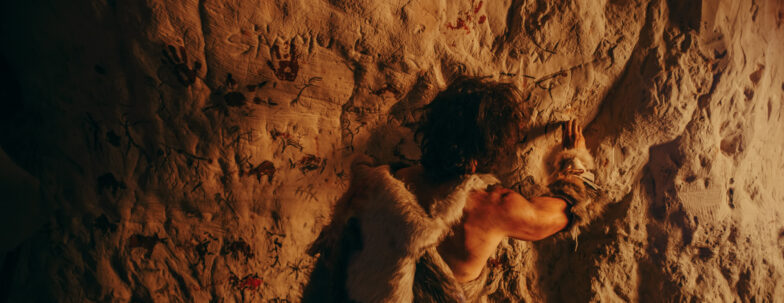Evolution and Stamp Collecting, Part 2 (of 2)
Part one of this series reviewed Nobel laureate Earnest Rutherford’s famous statement (“In science there is only physics; everything else is stamp collecting”) in the context of the modern theory of naturalistic macroevolution. It was noted that, whereas hard sciences like physics are based on predictable cause-and-effect relationships, modern paleontologists sort and categorize fossils in a method similar to the way stamp collectors sort and categorize stamps.
Evolutionary biologists infer a tree of life based on circular reasoning in which they assumenaturalistic evolution in order to prove naturalistic evolution. Moreover, the neo-Darwinian theory (c. 1940) is still cited as the mechanism by which the tree of life evolved. Collins states it this way: “Darwin’s theory of evolution [is that] descent from a common ancestor [occurred due to] natural selection operating on randomly occurring variations.”1
Unfortunately, a theory based on “randomly occurring variations” is neither reproducible or predictive or falsifiable. As embryologist and geneticist C. H. Waddington stated:
The theory of evolution is unfalsifiable. . . If an animal evolves one way, biologists have a perfectly good explanation; but if it evolves some other way, they have an equally good explanation. . . . The theory is not . . . a predictive theory as to what must happen.2
It is not science as Rutherford would define it.
That’s where the stamp collecting analogy comes in. Consider, for example, the postage stamps of the Republic of San Marino, a European “microstate” of about 30,000 people surrounded by Italy. This tiny republic generates an estimated 10 percent of its revenue from production and sale of postage stamps to international collectors. Hence, many of San Marino’s current stamps are exquisite, multicolored works of art, such as the Mark Twain and Akira Kurosawa issues for 2010. However, as one peruses a history of San Marino stamps—especially those produced before stamp production was a major industry —one finds much simpler designs using only one or two colors.
We earthlings know, of course, that San Marino’s stamps are designed and produced by an intelligent agency. But how would an extraterrestrial alien, removed in time and space from 21st century Earth, interpret a collection of San Marino stamp images? The alien would observe different kinds of images, different phenotypes. It would also observe a progression in time from the simple to the complex. It might assume that the stamp images were the product of intelligent design. But it might also assume they were images of life-forms on a distant planet. The alien might plausibly assume the increasing complexity of the images represented spontaneous, random evolution. A scientific school might even develop in an alien university, categorizing these “life-forms” based on phenotype and constructing an evolutionary tree of life.
What scientific evidence would the space alien have for either point of view? None. Both hypotheses are based only on observation together with “inference, however reasonable,”3 not on the scientific principles of reproduciblity, predictivity, and falsifiablity. And that’s the point.
No one questions that “randomly occurring variations”4 have been observed in nature. However, such variations have produced only small-scale modifications in certain organisms (microevolution). No hard evidence exists for macroevolution along the tree of life. Paleontologist Steven M. Stanley has observed, “Despite the detailed study of the Pleistocene mammals of Europe, not a single valid example is known of phyletic [gradual] transition from one genus to another.”5 Evolutionary zoologist Pierre P. Grassé claims that “to insist, even with Olympian assurance, that life appeared quite by chance and evolved in this fashion , is an unfounded supposition which I believe to be wrong and not in accordance with the facts.”6 “I have seen no evidence whatsoever that these changes can occur through the accumulation of gradual mutations” says evolutionary biologist Lynn Margulis; and she adds “neo-Darwinism, which insists on that, is in a complete funk.”7
The assumption of random action has proved useful in science only when the end result is reproducible and supported by probability theory, as in radioactive decay. But that is not the case with evolution. Murray Eden of MIT, for example, contrasts randomness in chemistry with neo-Darwinian naturalistic evolution by pointing out that chemistry explains rearrangements of molecules with a well-understood and reproducible mechanism, but evolution “explains” the rearrangement of genetic material with a hand-waving argument that is neither testable nor predictable nor reproducible.8
Although it was possible to defend the neo-Darwinian hypothesis based on probability theory when it was originally developed (because the scientific community assumed an eternal universe), that is no longer the case due to modern scientific acceptance of less than 15 billion years as a maximum age for the universe. In fact, when probability theory is applied to the observed rate of microevolution in light of modern science’s best estimates for the age of the earth, the random mutation argument seems to fall apart (see here and here). Sir Fred Hoyle and Chandra Wickramasinghe documented this in detail in their book, Why Neo-Darwinism Doesn’t Work.9
In summary, the modern so-called evidence for transitional forms leading to the assumption that “descent from a common ancestor [occurred due to] natural selection operating on randomly occurring variations”10 is based strictly on observation—and worse, based largely on observation of pseudo-life-forms inferred from fossil fragments. It is a theory that is neither reproducible or predictive or falsifiable, and falls apart when scrutinized by probability theory.

Dr. Hugh Henry received his PhD in Physics from the University of Virginia in 1971, retired after 26 years at Varian Medical Systems, and currently serves as Lecturer in physics at Northern Kentucky University in Highland Heights, KY.

Mr. Daniel J. Dyke received his Master of Theology from Princeton Theological Seminary 1981 and currently serves as professor of Old Testament at Cincinnati Christian University in Cincinnati, OH.
| Part 1 | Part 2 |
Endnotes
- Francis Collins, The Language of God (New York: Free Press, 2006), 127–29.
- C. H. Waddington, “Summary Discussion,” ed. Paul S. Moorhead, Mathematical Challenge to the Neo-Darwinian Interpretation of Evolution (Philadelphia: The Wistar Institute Press, 1967), 98.
- Stephen Jay Gould, “Evolution’s Erratic Pace,” Natural History 86, (1977): 14.
- Collins, The Language of God, 127–29.
- Steven M. Stanley, Macroevolution: Patterns & Process (San Francisco: W. H. Freeman and Company, 1979), 82.
- Pierre P. Grassé, Evolution of Living Organisms (New York: Academic Press, 1977), 107.
- Charles Mann, “Lynn Margulis: Science’s Unruly Earth Mother,” Science 252 (April 19, 1991): 379.
- Murray Eden, “Inadequacies of Neo-Darwinian Evolution as a Scientific Theory,” ed. Paul S. Moorhead, Mathematical Challenge to the Neo-Darwinian Interpretation of Evolution (Philadelphia: The Wistar Institute Press, 1967), 111.
- Sir Fred Hoyle and Chandra Wickramasinghe, Why Neo-Darwinism Doesn’t Work, (Cardiff: University College Cardiff Press, 1982).
- Collins, The Language of God, 127–29.






